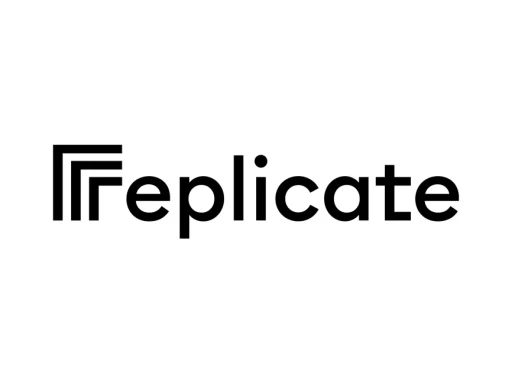The Unique Power of Event-Driven Architecture
Jan 10, 2025
Event-Driven Architecture

Imagine a world where your AI doesn’t just respond to commands, but anticipates needs, seizes opportunities, and solves problems in real-time. That’s the world we’re building at Altar.
On our current Altar platform, creating sophisticated AI workflows is as easy as connecting nodes in a visual interface. These nodes represent various tasks, decisions, or actions that can be executed in sequence or parallel, creating workflows capable of solving complex problems with AI. Once you’ve built a workflow, you have two primary ways to set it in motion:
Chatbot interaction: This method allows you to interact with your AI workflow in plain natural language. Think of it as having an incredibly capable assistant at your fingertips, ready to carry out your instructions with a simple conversation.
Programmatic Invocation: For developers who like a little more control, the REST API is your go-to option. You can programmatically call your workflow, passing structured inputs to the AI and getting precise outputs, ideal for integration into external systems or applications.
Both methods work well but have one major limitation: manual intervention is required. Either you interact with the chatbot or build and maintain an external program to call the API. This works fine for ad-hoc tasks or pre-scheduled routines, but it doesn’t offer the level of hands-free, real-time responsiveness required to bring your agentic tooling to life.
To address this, we’re moving towards a game-changing innovation: event-driven architecture. This approach allows workflows to be triggered automatically by specific events, eliminating the need for manual input. With this architecture, your workflows become truly autonomous, responding to triggers as they occur, 24/7.
What Does This Look Like in Practice?
Imagine waking up one morning to find that while you slept, your AI agent made you a small fortune. It detected a sudden surge in a new token’s popularity, analyzed market sentiment, executed a perfectly timed trade, and even minted an NFT commemorating the successful operation. All of this happened automatically, triggered by a cascade of events that your AI agent was programmed to monitor and act upon.
Expanding the Vision
This functionality extends across industries, but for now let’s focus on the crypto and web3 space.
Here are some examples of how Altar’s new event-driven architecture can reshape your on-chain life:
Automated Trading Bots: Agents could react to market signals — like sudden spikes in trading volume, price surges, or news events — and automatically execute buy or sell orders. These bots could also apply advanced AI strategies, such as analyzing historical data and sentiment to predict the next market move.
Portfolio Rebalancing: Imagine an agent that monitors your cryptocurrency portfolio and rebalances it automatically based on predefined criteria. For example, if one coin’s value becomes disproportionately high compared to others, the agent could sell a portion to maintain your desired risk allocation.
Smart Staking Decisions: With staking becoming a popular way to earn passive income in crypto, workflows could automatically identify the best staking opportunities. They could monitor APY changes across platforms, move funds to more profitable pools, and even calculate the risks of lock-up periods.
Transaction Monitoring and Security: In DeFi applications, workflows could continuously monitor your wallet for unusual transactions. If a suspicious transaction is detected (e.g., an unusually high gas fee or an unknown recipient address), the workflow could freeze the wallet or alert you instantly to prevent potential fraud.
Token Launch Automation: When you decide to launch a new token, a workflow could handle everything from smart contract deployment to liquidity pool creation on dexs like Uniswap or Aerodrome. It could even generate promotional materials or initiate marketing campaigns automatically.
Real-Time Arbitrage: The workflow could monitor multiple exchanges for price discrepancies of the same asset. When an arbitrage opportunity is detected, it would execute a series of transactions to buy low on one exchange and sell high on another, profiting from the difference — all within milliseconds.
These examples demonstrate how event-driven agents can streamline, optimize, and secure processes in the blockchain world. By combining Altar’s automation capabilities with the dynamic nature of crypto, we’re unlocking tools that are faster, smarter, and more adaptable than ever before.
The Rise of Autonomous AI Agents
The ultimate goal of this evolution is to create autonomous AI agents. These agents will specialize in specific domains or tasks, constantly listening for signals (events) across the internet and acting without human intervention.
Consider this scenario: Elon Musk tweets a meme featuring a Shiba Inu in a spacesuit. Within seconds, your AI agent:
Detects the tweet and analyzes its potential market impact
Identifies related tokens or creates a new meme coin if warranted ($SPACEDOGE, anyone?)
Deploys the token on pump.fun
Initiates a targeted social media campaign
Monitors sentiment and trading volume, adjusting strategy in real-time
All of this happens autonomously, capitalizing on the momentum before most humans have even seen the tweet.
These agents aren’t limited to just listening; they can connect to APIs, execute transactions, make decisions, and even learn from the outcomes of their actions. With this technology, the Altar platform becomes more than a tool — it becomes a breeding ground for AI agents that are intelligent, proactive, and highly specialized.
Why Event-Driven Architecture Matters
The move to event-driven workflows represents a fundamental shift in how we think about automation. Instead of building systems that respond only when asked, we’re enabling AI to anticipate, analyze, and act based on real-world inputs as they happen. This not only saves time but also unlocks entirely new possibilities for applications where speed, precision, and autonomy are critical.
In essence, it’s no longer about connecting nodes to execute workflows on command. It’s about creating an ecosystem of smart, interconnected agents that can sense the world, adapt to change, and deliver results — all while you focus on higher-level priorities. The future of the Altar platform is not just about workflows; it’s about building an army of automated problem solvers, ready to tackle challenges before you even know they exist.



















